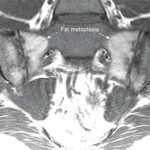A recent review has expanded the current thinking about the benefits of exercise therapy for patients with chronic fatigue syndrome. Study participants experienced improved sleep, physical function and self-perceived general health…


A recent review has expanded the current thinking about the benefits of exercise therapy for patients with chronic fatigue syndrome. Study participants experienced improved sleep, physical function and self-perceived general health…
Erin Blakemore |
(Reuters Health)—Glucosamine sulfate and chondroitin sulfate are not more beneficial than placebo treatments for patients with knee osteoarthritis, a recent trial suggests. In a double-blind study, researchers investigated the efficacy of a medicine that delivered both glucosamine and chondroitin sulfate. The 164 participants all had osteoarthritis and moderate to severe knee pain. Half the participants…

Diana M. Girnita, MD, PhD, Cody Lee, MD, & Christine Chhakchhuak, MD |
Pegloticase is a new alternative therapy for patients with severe, refractory gout unresponsive to other urate-lowering agents. The goal of this therapy is to reduce disease burden, tophi size and frequency of flares and to improve quality of life when other treatments have failed. Persistent lowering of plasma uric acid (PUA) to less than 6…

Martin Garber, DO |
When uric acid becomes elevated in the human body, a variety of problems can develop, most notably gout—a painful, inflammatory arthritis caused by uric acid crystal deposition in joints. Chronically elevated uric acid can also lead to painful kidney stones. The majority of patients found to have hyperuricemia, however, never go on to develop gout…

Michelle Burda, MLS, & Terence Starz, MD |
A 52-year-old woman comes to the office complaining of a two-month history of pain and swelling in the small joints of her hands, feet and knees. She says, “Doctor, I’ve been searching the Internet, and I think I have rheumatoid arthritis. I have some questions for you.” The healthcare system in the U.S. is changing…

CHICAGO—Medicine is in the middle of an infectious-disease “revolution” that seems almost destined to lead to prevention through immunization of many diseases, including rheumatic illnesses, that never were previously thought to involve transmissible agents, an infectious disease specialist said in a session at the ACR’s 2016 State-of-the-Art Clinical Symposium. An array of unlikely and fascinating…

CHICAGO—Researchers have come to know a great deal about IgG4-related disease in a short amount of time, leading to effective treatments with the prospect for more, an expert said at the 2016 State-of-the-Art Clinical Symposium. “One of the most exciting things for me is how quickly we’ve been able to move in understanding this disease,”…

CHICAGO—Diagnosing and treating IgA vasculitis—leukocytoclastic vasculitis involving deposits of IgA1 deposits on the walls of small vessels—is rife with uncertainties, outright unknowns and treatment challenges, an expert on the disease said at the ACR’s 2016 State-of-the-Art Clinical Symposium. Alexandra Villa-Forte, MD, MPH, staff physician at Cleveland Clinic’s Center for Vasculitis Care and Research, said IgA…

Larry Beresford |
SAN FRANCISCO—The heterogeneity of systemic vasculitis, a set of diseases characterized by inflammation of blood vessel walls, presents rheumatologists with diagnostic and treatment challenges, said Sharon A. Chung, MD, MAS, director of the University of California, San Francisco Vasculitis Clinic, at the California Rheumatology Alliance 2016 Scientific & Medical Meeting in May. She outlined emerging…

Larry Beresford |
SAN FRANCISCO—“We haven’t made a lot of progress in ensuring the early diagnosis of spondyloarthritis,” said Walter Maksymowych, MD, FRCP, professor of medicine in the Division of Rheumatology at the University of Alberta and chief medical officer at CaRE (Canadian Research and Education) Arthritis, both in Edmonton. Speaking at the California Rheumatology Alliance 2016 Medical…